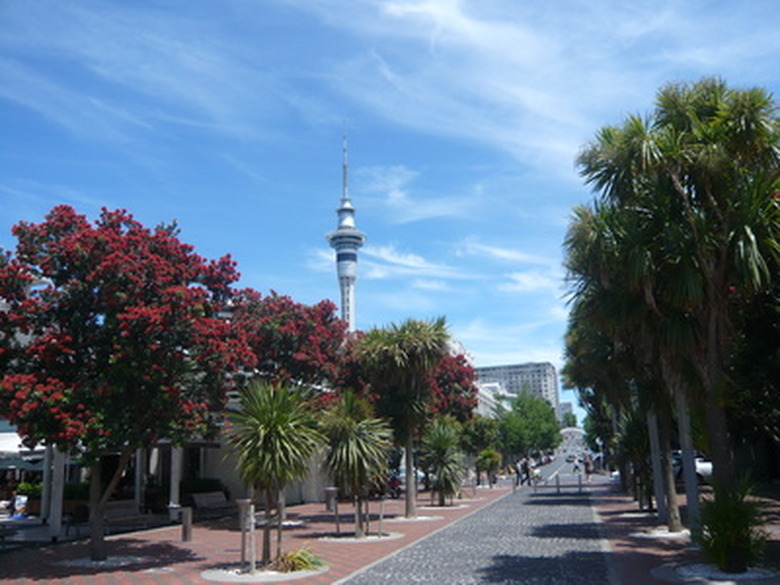Types Of Evergreen Trees In New Zealand
New Zealand has a rich and diverse collection of native plants that occur only on this island group. New Zealand encompasses a range of climates, from the north's lush, subtropical forest to the south's alpine regions. This has lead to a diversity of trees, many of which are evergreen.
Kauri
The evergreen native New Zealand kauri (scientific name Agathis australis) is the third-largest conifer tree by volume in the world after the coast and giant redwoods of California. It reaches 100 feet tall with a 13-foot trunk diameter. The kauri grows in the subtropical region of the North Island, where it dominates the wet forests. The canopy of the kauri can reach over 100 feet wide, with the first branches starting about 50 feet off the ground. The bark is light gray and regularly peels off in sheets, keeping it mostly free of mosses and other plants. Over time, large piles of bark accumulate at the base of the tree several feet thick which slowly decay providing nutrients to the roots. This tree was preferred by New Zealand's native Maori people for building sea-going canoes.
- New Zealand has a rich and diverse collection of native plants that occur only on this island group.
- The canopy of the kauri can reach over 100 feet wide, with the first branches starting about 50 feet off the ground.
White Pine
The New Zealand white pine (scientific name Dacrycarpus dacrydioides) is the tallest evergreen conifer tree native to the islands, growing to 160 feet tall or more. They are perfectly adapted to low lying and swampland areas with broad buttressed trunks for stability, but they also occur in mountainous areas up to 2000 feet. The cone on the white pine is modified into a bright red berry that grows on the tips of the branches with a single seed on the end. The fruit is an important food source for birds. New Zealand's white pines should not be confused with the Northern Hemisphere's white pines, which are members of genus Pinus.
New Zealand Christmas Tree
The New Zealand Christmas tree or Pohutukawa (scientific name Metrosideros excelsa) is a broadleaved evergreen tree native to the coasts of New Zealand. It gets the name "Christmas tree" because of the bright red flowers that peak during the summer hemisphere's summer, right around Christmas. The trees grow to 65 feet tall with a crown spread of 115 feet supported by multiple aerial roots that eventually mature into trunks. While it grows along the coastline all over New Zealand in rocky areas, it is native to the North Island. New Zealand Christmas Tree is very salt-tolerant and sometimes can be seen with its branches or roots growing into the saltwater. Often a large tree will follow the contour of the rocks, taking root in any cracks and crevices the roots can find. Huge grove-like trees can reach ages of over 1,000 years.
- The New Zealand white pine (scientific name Dacrycarpus dacrydioides) is the tallest evergreen conifer tree native to the islands, growing to 160 feet tall or more.
